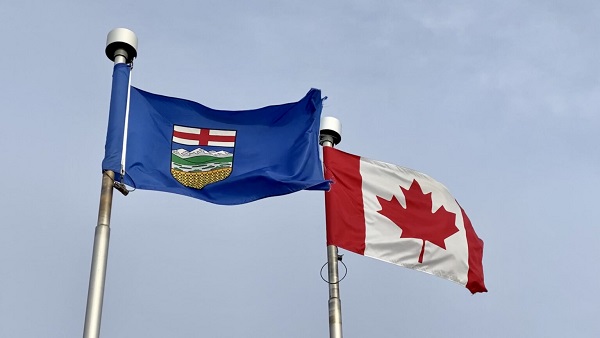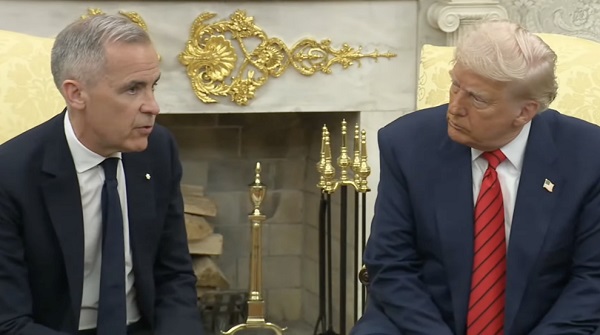Business
The SBF Scandal: The Players and the Money

From the Brownstone Institute
BY
The complexities of the FTX scandal with Sam Bankman-Fried at the helm boggles the mind. Unlike the Madoff scandal, which was incredibly simple, the funding, influence, and political networks sounding the $32 billion collapse of FTX is byzantine by design.
Just have a look at the org chart of the company to get a sense. It’s all the better for avoiding oversight.

What we really need in the months or even years in which it will take to sort all of this out is some kind of key to the major players. What follows is a list which we’ve put together in order of network importance for easy reference. This small effort is made necessary because there seems to be very little attention being given to the entire SBF empire, both in terms of the players with whom he worked and where the money ended up.
It’s nowhere near being a guide to the fullness of the networks of funding and influence, and can only begin to hint at the real story of what was really behind this magic bean factory in the Bahamas. Their operations and networks are deliberately obscure and fan out over many countries, institutions, and individuals. There is a strange silence in the air about the details other than the general observation that Sam Bankman-Fried was up to no good.
And yet there were obviously many people involved. It’s probable that the main point was to fund political causes in a way that gets around federal election law, as the indictment suggests in count eight. However, a close examination of the networks keeps coming back to the strange theme of pandemic planning and support for various methods of controlling the population in the name of controlling infectious disease. Aside from political donations, this was a central concern. What that has to do with a crypto exchange is another matter.
All of which should raise a question given the time of the life of FTX (2019-2022): to what extent was the network surrounding this institution useful in providing back-channel funding support for (and lack of opposition to) the most unprecedented attack on human liberty in our lifetimes? This question applies to both the direct political contributions and the various other donations to institutions and individuals.
Corrections to this list are welcome.
Family
Sam Bankman-Fried: Went to MIT, worked for Centre for Effective Altruism (fundraising 2017) and started Alameda Research in November 2017, and then the crypto trading company FTX two years later, which he ran until 2022 when it all collapsed after becoming the second-largest donor to Democrats ($38M).
Barbara Helen Fried: mother of Sam, Harvard Law graduate, professor at Stanford University, booster of Effective Altruism, and founder of Mind the Gap, a secretive political action committee in Silicon Valley.
Alan Joseph Bankman: father of Sam, Yale Law graduate and later clinical psychologist, law professor at Stanford, and author and expert on tax law.
Linda Fried: Sam’s aunt on his mother’s side and Dean of School of Public Health at Columbia University and on the board of the World Economic Forum’s Global Agenda Council on Aging.
Gabriel Bankman-Fried: Sam’s brother who ran Guarding Against Pandemics, a lobbying organization supporting “pandemic planning” also known as lockdowns and vaccine mandates. It has a Capitol Hill headquarters that cost $3.3 million. He previously served on a Congressional staff.
Associates
Caroline Ellison: Schooled at Stanford, she is daughter of Glenn Ellison and Sara Fisher Ellison, both professors at MIT. She became CEO of Sam’s Alameda Research and reported girlfriend of Sam’s.
Sara Fisher Ellison and Glenn Ellison: Caroline’s mother is professor of economics at MIT with a research specialization in the pharmaceutical industry while her father has written at least four papers on epidemiological modeling.
Nishad Singh: former MIT roommate of Sam’s who is said to have built the FTX platform. He seems to have left the Bahamas for India.
Zixiao “Gary” Wang: Co-founder with Sam of FTX and Alameda. He graduated from MIT and worked for Google. Beyond that hardly anything is known about him. He seems to have left the Bahamas and is reported to be in Hong Kong.
Ryan Salame: Graduate of UMass-Amherst and head of FTX Digital Markets, plus proprietor of R Salame Digital Asset Fund through the Berkshire Taconic Community Foundation, allegedly for charitable purposes.
William David MacAskill: real name Crouch, William is an author and philosopher and founder of the Centre for Effective Altruism and a close colleague of Sam’s. He served on the board of FTX Future Fund until it collapsed. He is a media personality who gives TED talks and is a leader purveyor of the view that one should get very rich and give it away.
Funded Institutions and Individuals (some taken from here)
Together Trial: This elaborate trial of therapeutics ended up inveighing against Ivermectin and Hydroxychloroquine and was generously funded by FTX. But that has been scrubbed from the public website. This is a continuing problem.
Moncef Slaoui: The head of Operation Warp Speed, he received $150,000 from FTX to write SBF’s autobiography, according to a Washington Post investigation.
HelixNano: A vaccine company that claims to be developing mutation-resistant vaccines, which received $10M in funding from FTX Future Fund, according to a Washington Post investigation.
Johns Hopkins Center for Health Security: This institution ran the Event 201 lockdown tabletop exercise in 2019, and received at least $175,000 for a single employee, from FTX coffers. We don’t know the full extent but it was enough for the head of the Center to defend Sam and FTX in public. Nor do we know Alameda Research’s funding reach of this institution.
Guarding Against Pandemics: Run by Sam’s brother Gabriel, this 501c4 gave at least $1M to campaigns in 2022. We do not know how much money Alameda/FTX funneled to this institution. Sam fequently recommend it as a target for charitable giving.
Protect Our Future: run by the two brothers, this PAC gave $28M to candidates in the 2022 cycle. We do not know how much Alameda/FTX gave.
Center for Innovation in Global Health, Stanford University: FTX and its network gave $1.5M to the institution.
ProPublica: A grant of $5M from FTX Future Fund. Other reports say $27 million.
Centre for Effective Altruism: FTX Future fund gift of $14M
Effective Ideas Blog: It promised to pay $1K to good blogs, and its Twitter frequently links to other institutions and individuals in the FTX network. Funded by Future Fund: $900K
Piezo Therapeutics: “Work on technology for delivering mRNA vaccines without lipid nanoparticles with the aim of making vaccines more safe, affordable, and scalable.” FTX gave $1M
Council on Strategic Risks: “a project which will develop and advance ideas for strengthening regional and multilateral cooperation for addressing biological risks.” $400K from FTX
AVECRIS Pte. Ltd: “support the development of a next-generation genetic vaccine platform that aims to allow for highly distributed vaccine production using AVECRIS’s advanced DNA vector delivery technology.” $3.6M from FTX
University of Ottawa: “a project to develop new plastic surfaces incorporating molecules that can be activated with low-energy visible light to eradicate bacteria and kill viruses continuously.” FTX gave $250K
1Day Sooner: “work on pandemic preparedness, including advocacy for advance market purchase commitments, collaboration with the UK Pandemic Ethics Accelerator.” FTX gave $300K.
SAGE: “creation of a pilot version of a forecasting platform, and a paid forecasting team, to make predictions about questions relevant to high-impact research.” FTX gave $700K
Longview: “global priorities research, nuclear weapons policy, and other longtermist issues.” Advisor: William MacAskill. FTX gave $15M
Confirm Solutions: “support development of statistical models and software tools that can automate parts of the regulatory process for complex clinical trials.” FTX gave $1M
Lightcone Infrastructure: “ongoing projects including running the LessWrong forum, hosting conferences and events, and maintaining an office space for Effective Altruist organizations.” FTX gave $2M
Rational Animations: “the creation of animated videos on topics related to rationality and effective altruism to explain these topics for a broader audience.” FTX gift: $400K
Giving What We Can: “to create a world in which giving effectively and significantly is a cultural norm.” FTX gift: $700,000
The Atlas Fellowship: scholarships for talented and promising high school students to use towards educational opportunities and enrolling in a summer program. FTX gift: $5M
Constellation: “support 18 months of operations for a longtermist coworking space in Berkeley.” FIX coughed up $3.9M
Longview Philanthropy: “creating a longtermist coworking office in London.” FTX committed $2.9M
Long Term Future Fund: “longtermist grantmaking.” FTX committed $3.9M
OurWorldinData: graphs and charts portal. FTX committed $7.5M
Institute for Progress: “research and policy engagement work on high-skilled immigration, biosecurity, and pandemic prevention.” FTX was in for $480K. Additional support came from Emergent Ventures, which was modeled on Fast Grants that funded Neil Ferguson’s pandemic modeling at Imperial College London, which seems to have an entangled relationship with the SFB empire, one yet to be fully disclosed.
Conclusion
What is listed above only scratches the surface of the admitted $160 million given out, but the promise had been for fully $1 billion to go to various nonprofits in this network that seems to be supported or even founded in order to receive money from FTX-connected institutions.
We could only list some of the names and a fraction of the dollar amounts. There are many other institutions and names that could be part of this list but we lacked enough documentation to verify for this article. There is still the task of listing all political campaigns that were in receipt of the money as well as the public-relations boosters of the whole effort.
Building off the success of Bill Gates, Sam Bankman-Fried, and his many associates, clearly saw philanthropy as the path to influence, power, and protection. At the same time, many nonprofit organizations saw an opportunity too; to build their own empires through promised millions and billions from a crypto genius in the Bahamas who had an unusual passion for pandemic planning.
For three years, many of us have wondered how it came to be that the critics of lockdowns and mandates were so few and far between. There are surely many explanations but, as usual, it helps fill in the dots to follow the money.
Business
RFK Jr. says Hep B vaccine is linked to 1,135% higher autism rate

From LifeSiteNews
By Matt Lamb
They got rid of all the older children essentially and just had younger children who were too young to be diagnosed and they stratified that, stratified the data
The Centers for Disease Control and Prevention (CDC) found newborn babies who received the Hepatitis B vaccine had 1,135-percent higher autism rates than those who did not or received it later in life, Robert F. Kennedy Jr. told Tucker Carlson recently. However, the CDC practiced “trickery” in its studies on autism so as not to implicate vaccines, Kennedy said.
RFK Jr., who is the current Secretary of Health and Human Services, said the CDC buried the results by manipulating the data. Kennedy has pledged to find the causes of autism, with a particular focus on the role vaccines may play in the rise in rates in the past decades.
The Hepatitis B shot is required by nearly every state in the U.S. for children to attend school, day care, or both. The CDC recommends the jab for all babies at birth, regardless of whether their mother has Hep B, which is easily diagnosable and commonly spread through sexual activity, piercings, and tattoos.
“They kept the study secret and then they manipulated it through five different iterations to try to bury the link and we know how they did it – they got rid of all the older children essentially and just had younger children who were too young to be diagnosed and they stratified that, stratified the data,” Kennedy told Carlson for an episode of the commentator’s podcast. “And they did a lot of other tricks and all of those studies were the subject of those kind of that kind of trickery.”
But now, Kennedy said, the CDC will be conducting real and honest scientific research that follows the highest standards of evidence.
“We’re going to do real science,” Kennedy said. “We’re going to make the databases public for the first time.”
He said the CDC will be compiling records from variety of sources to allow researchers to do better studies on vaccines.
“We’re going to make this data available for independent scientists so everybody can look at it,” the HHS secretary said.
— Matt Lamb (@MattLamb22) July 1, 2025
Health and Human Services also said it has put out grant requests for scientists who want to study the issue further.
Kennedy reiterated that by September there will be some initial insights and further information will come within the next six months.
Carlson asked if the answers would “differ from status quo kind of thinking.”
“I think they will,” Kennedy said. He continued on to say that people “need to stop trusting the experts.”
“We were told at the beginning of COVID ‘don’t look at any data yourself, don’t do any investigation yourself, just trust the experts,”‘ he said.
In a democracy, Kennedy said, we have the “obligation” to “do our own research.”
“That’s the way it should be done,” Kennedy said.
He also reiterated that HHS will return to “gold standard science” and publish the results so everyone can review them.
Business
Elon Musk slams Trump’s ‘Big Beautiful Bill,’ calls for new political party

From LifeSiteNews
By Robert Jones
The Tesla CEO warned that Trump’s $5 trillion plan erases DOGE’s cost-cutting gains, while threatening to unseat lawmakers who vote for it.
Elon Musk has reignited his feud with President Donald Trump by denouncing his “Big Beautiful Bill” in a string of social media posts, warning that it would add $5 trillion to the national debt.
“I’m sorry, but I just can’t stand it anymore. This massive, outrageous, pork-filled Congressional spending bill is a disgusting abomination. Shame on those who voted for it: you know you did wrong. You know it,” Musk exclaimed in an X post last month.
I’m sorry, but I just can’t stand it anymore.
This massive, outrageous, pork-filled Congressional spending bill is a disgusting abomination.
Shame on those who voted for it: you know you did wrong. You know it.
— Elon Musk (@elonmusk) June 3, 2025
Musk renewed his criticism Monday after weeks of public silence, shaming lawmakers who support it while vowing to unseat Republicans who vote for it.
“They’ll lose their primary next year if it is the last thing I do on this Earth,” he posted on X, while adding that they “should hang their heads in shame.”
Every member of Congress who campaigned on reducing government spending and then immediately voted for the biggest debt increase in history should hang their head in shame!
And they will lose their primary next year if it is the last thing I do on this Earth.
— Elon Musk (@elonmusk) June 30, 2025
The Tesla and SpaceX CEO also threatened to publish images branding those lawmakers as “liars.”
Trump responded on Truth Social by accusing Musk of hypocrisy. “He may get more subsidy than any human being in history,” the president wrote. “Without subsidies, Elon would probably have to close up shop and head back home to South Africa… BIG MONEY TO BE SAVED!!!”
( @realDonaldTrump – Truth Social Post )
( Donald J. Trump – Jul 01, 2025, 12:44 AM ET )Elon Musk knew, long before he so strongly Endorsed me for President, that I was strongly against the EV Mandate. It is ridiculous, and was always a major part of my campaign. Electric cars… pic.twitter.com/VPadoTBoEt
— Donald J. Trump 🇺🇸 TRUTH POSTS (@TruthTrumpPosts) July 1, 2025
Musk responded by saying that even subsidies to his own companies should be cut.
Before and after the 2024 presidential election, Musk spoke out about government subsidies, including ones for electric vehicles, stating that Tesla would benefit if they were eliminated.
This latest exchange marks a new escalation in the long-running and often unpredictable relationship between the two figures. Musk contributed more than $250 million to Trump’s reelection campaign and was later appointed to lead the Department of Government Efficiency (DOGE), which oversaw the termination of more than 120,000 federal employees.
Musk has argued that Trump’s new bill wipes out DOGE’s savings and reveals a deeper structural problem. “We live in a one-party country – the PORKY PIG PARTY!!” he wrote, arguing that the legislation should be knows as the “DEBT SLAVERY bill” before calling for a new political party “that actually cares about the people.”
It is obvious with the insane spending of this bill, which increases the debt ceiling by a record FIVE TRILLION DOLLARS that we live in a one-party country – the PORKY PIG PARTY!!
Time for a new political party that actually cares about the people.
— Elon Musk (@elonmusk) June 30, 2025
In June, Musk deleted several inflammatory posts about the president, including one claiming that Trump was implicated in the Jeffrey Epstein files. He later acknowledged some of his comments “went too far.” Trump, in response, said the apology was “very nice.”
With the bill still under Senate review, the dispute underscores growing pressure on Trump from fiscal hardliners and tech-aligned conservatives – some of whom helped deliver his return to power. Cracks in the coalition may spell longer term problems for the Make America Great Again movement.
-

 Business6 hours ago
Business6 hours agoRFK Jr. says Hep B vaccine is linked to 1,135% higher autism rate
-

 Alberta1 day ago
Alberta1 day agoAlberta Independence Seekers Take First Step: Citizen Initiative Application Approved, Notice of Initiative Petition Issued
-

 Crime19 hours ago
Crime19 hours agoNational Health Care Fraud Takedown Results in 324 Defendants Charged in Connection with Over $14.6 Billion in Alleged Fraud
-

 Crime1 day ago
Crime1 day agoSuspected ambush leaves two firefighters dead in Idaho
-

 Health19 hours ago
Health19 hours agoRFK Jr. Unloads Disturbing Vaccine Secrets on Tucker—And Surprises Everyone on Trump
-

 Alberta1 day ago
Alberta1 day agoWhy the West’s separatists could be just as big a threat as Quebec’s
-

 Business1 day ago
Business1 day agoCanada Caves: Carney ditches digital services tax after criticism from Trump
-

 Business1 day ago
Business1 day agoMassive government child-care plan wreaking havoc across Ontario


